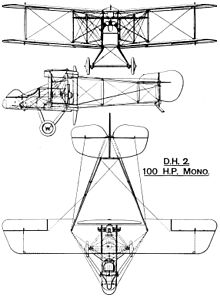Arthur Gerald Knight
Arthur Gerald Knight | |
|---|---|
| Nickname(s) | Gerry, Jerry |
| Born | 30 July 1895 Pas de Calais, France 50°10′31″N 2°43′17″E / 50.17528°N 2.72139°E |
| Allegiance | Canada United Kingdom |
| Service/ | Royal Flying Corps |
| Years of service | 1915-1916 |
| Rank | Captain |
| Unit | No. 4 Squadron RFC No. 24 Squadron RFC No. 29 Squadron RFC |
| Commands held | "B" Flight, No. 29 Squadron |
| Awards | Distinguished Service Order Military Cross |
Captain Arthur Gerald Knight DSO, MC (30 July 1895 – 20 December 1916) was a British World War I flying ace credited with eight aerial victories. He was under attack by Oswald Boelcke and Erwin Böhme when they collided, causing Boelcke's death. Two months later, Knight would fall under the guns of Manfred von Richthofen, who had also been in the dogfight when Boelcke was killed.[1]
Early life
Arthur Gerald Knight was the son of Arthur Cecil Knight and Isabella Jael Knight (née Balston). The younger Knight was a student of Applied Science at Upper Canada College when he joined the Royal Flying Corps in 1915.[2]
World War I service
Aerial victories
Knight was assigned to the command of Major

Notable combats
On 28 October, Knight was under attack by Boelcke and Böhme when McKay, pursued by Richthofen, cut across between Knight and his assailants. In the resultant dodges and swerves, Böhme's plane's landing gear wheels damaged Boelcke's upper wing, and Boelcke fell to his death.[4][3]
Knight transferred to
The only known description of Knight's end comes from the victor's combat report: "...I attacked him at closest range.... I saw immediately that I had hit the enemy. First he went down in curves, then he crashed to the ground. I pursued him until 100 metres above the ground."[6]
Honours and awards
- Military Cross
- Second Lieutenant Arthur Gerald Knight, Royal Flying Corps, Special Reserve.
- "For conspicuous skill and gallantry. He has shown great pluck in fights with enemy machines, and has accounted for several. On one occasion, when a hostile machine was interfering with a reconnaissance, he attacked at very close range, and brought down the enemy machine in flames.[7]
- Distinguished Service Order
- Second Lieutenant Arthur Gerald Knight, MC, Royal Flying Corps.
- "For conspicuous gallantry in action. He led four machines against 18 hostile machines. Choosing a good moment for attack he drove down five of them and dispersed the remainder. He has shown the utmost dash and judgment as a leader of offensive patrols."[8]
References
- ^ Guttman & Dempsey (2009), pp. 45 & 48.
- ^ a b "Arthur Gerald Knight". The Aerodrome. 2015. Retrieved 20 April 2015.
- ^ a b c Shores et al, pp. 226–227.
- ^ Guttman & Dempsey (2009), p.45.
- ^ Guttman & Dempsey (2009), p.48.
- ^ Guttman & Dempsey (2009), pp.48–49.
- ^ "No. 29824". The London Gazette (Supplement). 14 November 1916. p. 11058.
- ^ "No. 29859". The London Gazette (Supplement). 11 December 1916. p. 12101.
Bibliography
- Guttman, Jon & Dempsey, Harry (2009). Pusher Aces of World War I. Osprey Publishing. ISBN 978-1-84603-417-6.
- Shores, Christopher F.; ISBN 978-0-948817-19-9.
